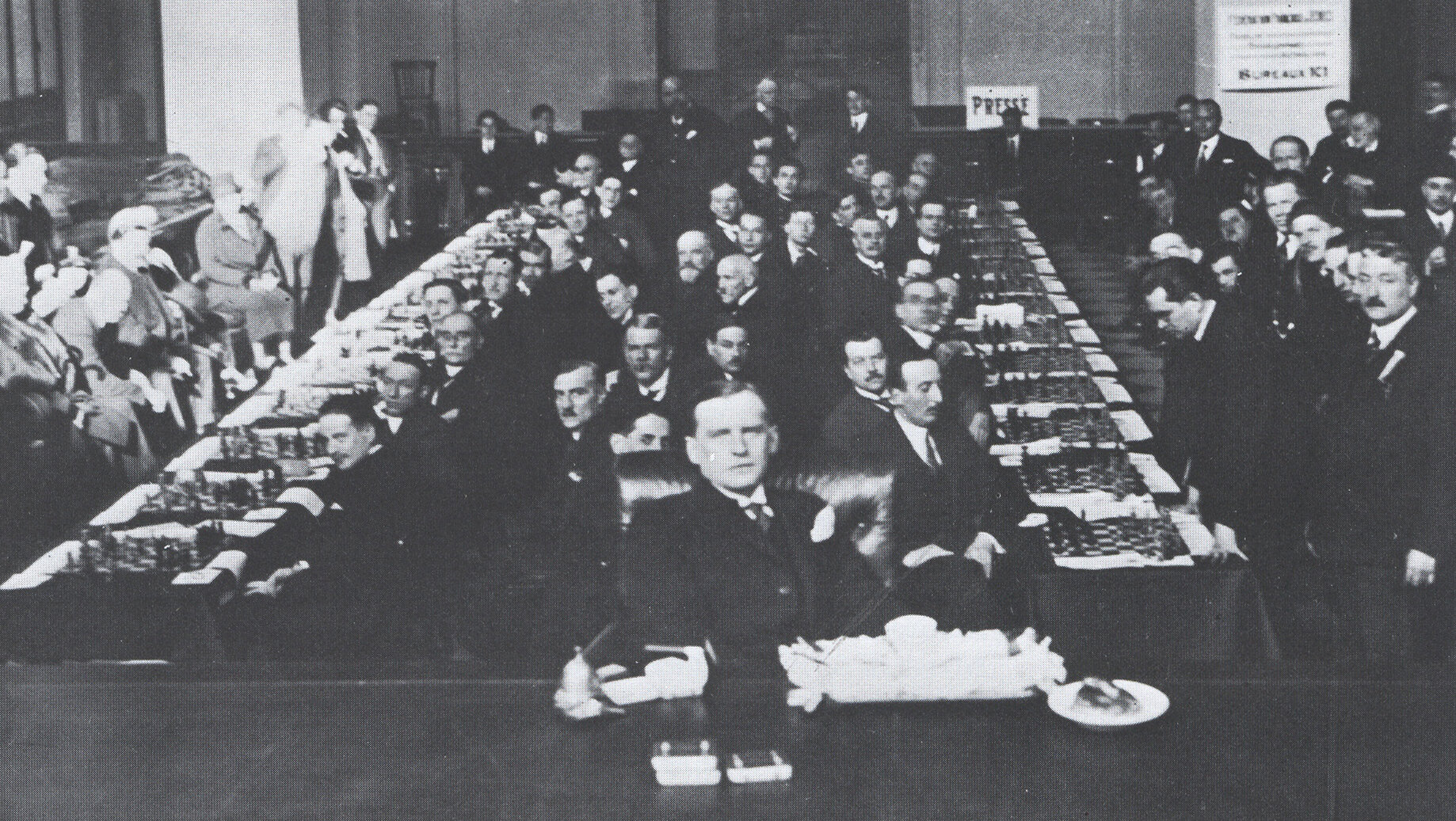
Eliot Hearst and John Knott’s Blindfold Chess: History, Psychology, Techniques, Champions, World Records, and Important Games is the definitive work on this fascinating topic.
Above: Alexander Alekhine playing blindfold against 28 opponents in Paris in 1925, thus setting a new world record and surpassing the world record of 26 opponents he had set the year before. (Credit: The Edward Winter Collection.)
Blindfold Chess won the Fred Cramer Award for the Best Chess Book of 2009, sponsored by the U.S. Chess Federation, the Chess Journalists of America, and the U.S. Chess Trust.
The book was also one of the four finalists for 2009 Chess Book of the Year by the English Chess Federation. (The winner was Kasparov’s book on his matches with Karpov.)
About the Book
During the 18th century, when Philidor played two blindfold games of chess simultaneously, eyewitnesses were asked to swear affidavits attesting to this remarkable feat. Since then, blindfold chess—the art of playing without sight of the board or pieces—has produced some of the greatest feats of human memory, progressing to the extent that the world record is 46 simultaneous blindfold games.
Published by McFarland and Company, this work provides the first extensive coverage of blindfold chess from its earliest known instances through the present day. It describes the personalities and achievements of some of blindfold chess’s greatest players—including Paulsen, Morphy, Blackburne, Zukertort, Pillsbury, Réti, Alekhine, Koltanowski, Najdorf and Fine, as well as present-day grandmasters such as Anand, Kramnik and Morozevich, who play in regular tournaments with all players blindfolded. Including some never before published, 444 games scores are presented, peppered with diagrams and annotations.
Hints for playing blindfold chess, the benefits of playing blindfold, and a readable summary of psychological research on blindfold chess ability are also included. Appendices offer a chronology of world-record simultaneous blindfold performances since the 18th century, and proposed rules for serious simultaneous blindfold play.
This book will be of special interest to psychologists, historians, computer scientists, people interested in great feats of memory, and, of course, chess players—as well as anyone fascinated by the power and capacity of the human mind.